The other Aston Martin F1 cars | PH Review
The F1 Safety and Medical cars aren't normally stars of the show - time for their 15 minutes of fame

Even if you’re an F1 fan, I bet you don’t think much about the F1 safety car, do you? That’s understandable – it’s hardly the star of the show. It pops out from time to time – usually after someone’s biffed their bespoke, multi-million-pound racing car in spectacular fashion – and trundles around like a wounded gazelle, being toyed with by a chasing pack of salivating lions. If you pay it any attention, you’ll know that sometimes it’s a Mercedes-AMG GT Black Series while, at others, it’s an Aston Martin Vantage. But did you watch the 2021 Abu Dhabi F1 Grand Prix? Or the more recent 2025 Spanish GP? If you did, then you’ll know that the under-the-radar F1 safety car can very much turn an F1 race on its head. So much so, we thought we’d have a look at the safety car, in Vantage form, and, for good measure, throw in the DBX medical car as well. I was keen to learn what upgrades they make to these cars so they can perform on track, but also chat to the drivers to understand how they go about their business.
For those that don’t know, relatively speaking, the F1 safety car hasn’t been around that long. The first time one appeared at an F1 race was the 1973 Canadian GP. That honour went to a yellow Porsche 914, but it was a bit-part player thereafter rather than a permanent fixture. It was introduced full-time as a must-have for the 1993 season, but the car itself still chopped and changed. And the FIA deployed some pretty ropey hardware over the next few seasons, including a Fiat Tempra, Opel Vectra, and Honda Prelude – hardly the stuff of dreams you’d expect to see leading a field of the world’s best cars driven by the world’s best drivers. There were some fancier models, like a Porsche 911 GT2 and Lamborghini Diablo, but it wasn’t until 1996, and the arrival of the Mercedes-AMG, that one manufacturer finally took responsibility for providing the cars and some model consistency. And that was how it stayed until 2021, when Aston Martin got in on the act and shared the responsibility 50:50.
The first Mercedes was a C36 AMG driven by Oliver Gavin. And Gavin stuck around for a few more years before his racing took him to America, so the FIA appointed Bernd Mayländer in 1999. I asked Bernd how he ended up with the job of official safety car driver. “In 1999 I was racing in the Porsche Supercup, part of the European Formula 1 season [as one of the support race series], and it was a really good year for me. Then I get a phone call, and it was Charlie Whiting [then F1 Race Director], who I’d never spoken to before, and he asked me to come to his office. I thought something was wrong with my car, but he said he was looking for a new safety car driver.”
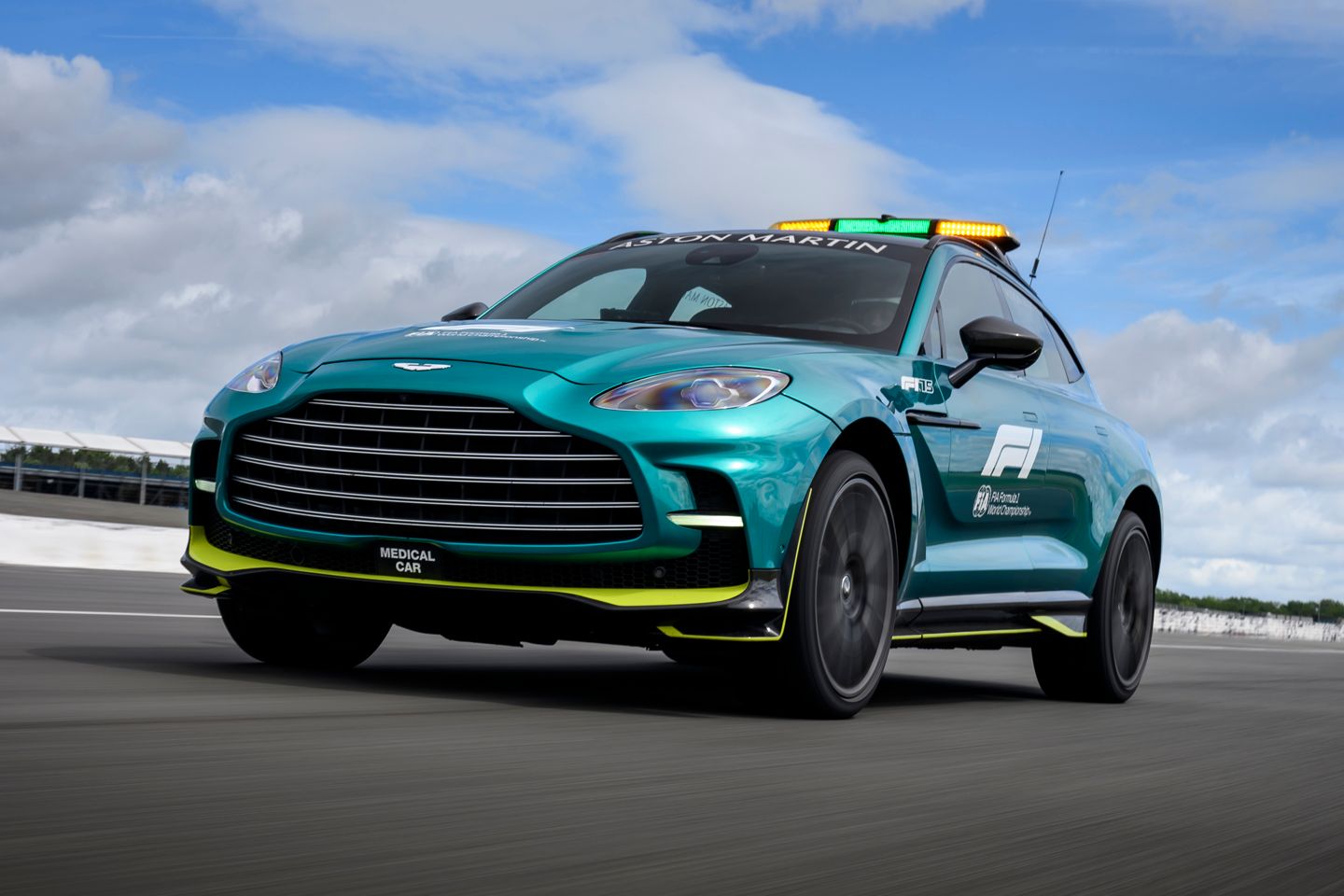
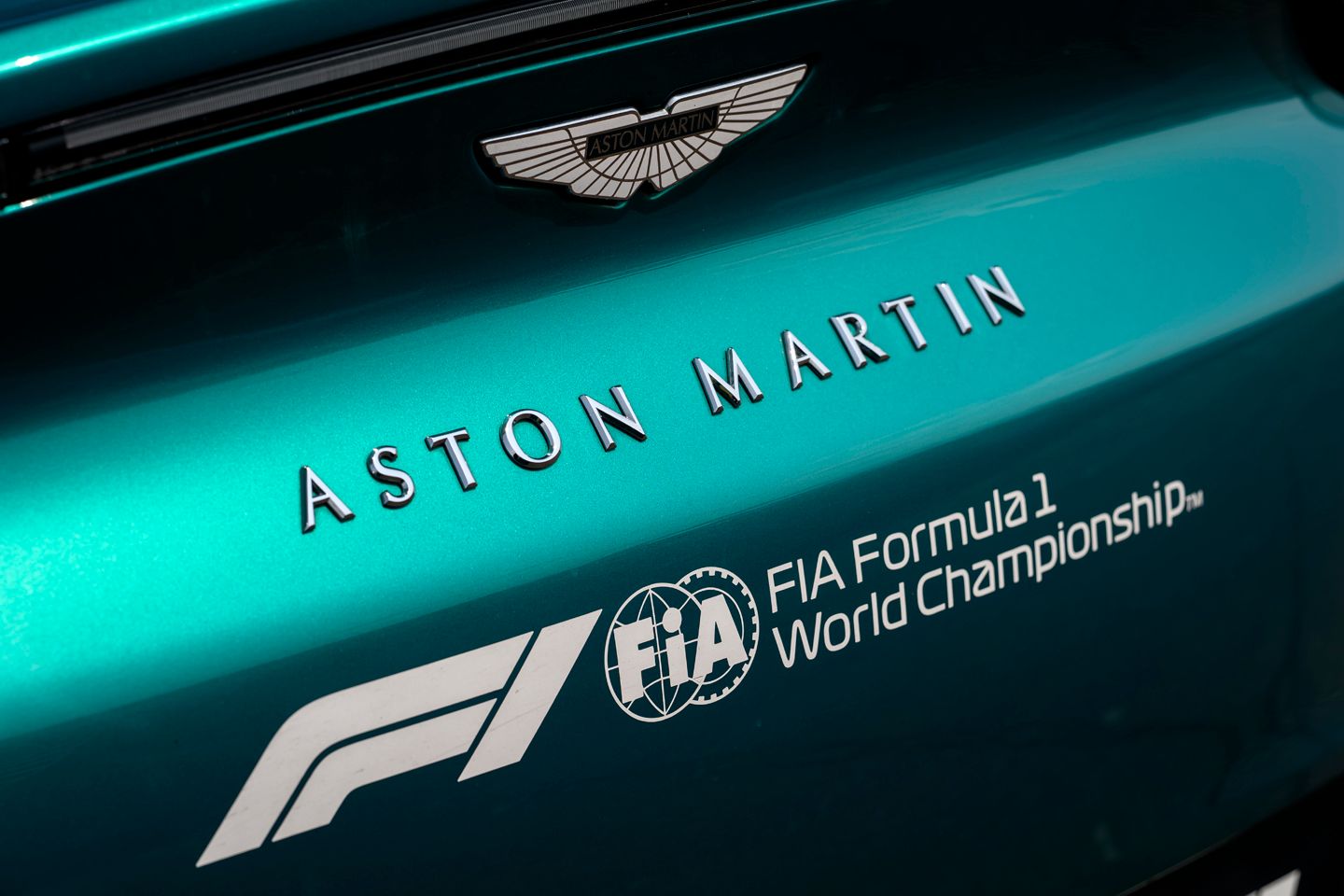
“Why you, Bernd?” I asked him. Well, he said, “I’d driven for Mercedes in DTM and the FIA GT championship…,” and Norbert Haug, Mercedes’ former motorsports boss, “...told Charlie, Bernd knows the brand, he knows the rules, he knows when to be quiet, and he’s not crazy.” In other words, Bernd won’t say anything stupid and won’t crash, so that was that. I asked him what’s the biggest difference between when he started and now. “The first race was in a sporty, big coupé from AMG [a CL]. Very comfortable with a full leather seat and a hand radio connected by speakers. Now we have GPS mapping [showing where all the cars are on track], we can see the G-force on a driver after an accident, paddleshifting, traction control, much more power, and we are not normally on the track anymore for more than 10 to 15 laps before a red flag. In the old times, I remember 2007 in Fuji we were leading for 30 laps; Canada in 2011 34 laps.”
Bernd’s safety car is effectively a road car with good ground clearance, while the F1 cars have very little ground clearance, so are much more prone to aquaplaning. They also have no wipers, of course, and the combination of downforce and big, uncovered wheels means they throw spray high into the air, so visibility is a massive issue. On those days when it’s wet, and Bernd’s leading the field round, can he tell when a track’s safe for F1 cars? “I think so,” he says. “I am quite good at that because it’s an experience thing. Even if you talk to the drivers, they give you a lot of information; if we stop a race with a red flag, I am immediately going to the drivers and asking about the aquaplaning just to understand it a bit more. And if you ask the car behind me how was the visibility, he might say it was okay, but go to the tenth driver and he might say I couldn’t see anything. So I give my information, but the decision [on when to race] is always taken by race control.”
Does Bernd get nervous? “Yes,” he said, “even now I still get nervous on the grid.” That’s understandable, with the eyes of the world on him. And what was his most challenging race so far? Without a moment’s hesitation, he said, “Montreal 2011, because it was a big challenge to do the right things.” And favourite race? “Event-wise, it would be Silverstone together with Austin, but my favourite track is Suzuka.” From his first F1 race in 2000 until today, Bernd’s missed just a few races – Monaco and Canada in 2001, because he broke his heel, and the US race in 2002, because he had a wedding he couldn’t miss. That’s proper commitment, considering these days there are 24 races in a grindingly long season. New Zealander, Karl Reindler, who drives the DBX medical car, says he doesn’t know how Bernd does it – Karl shares his job 50:50 over the season with Portuguese driver Bruno Correia.
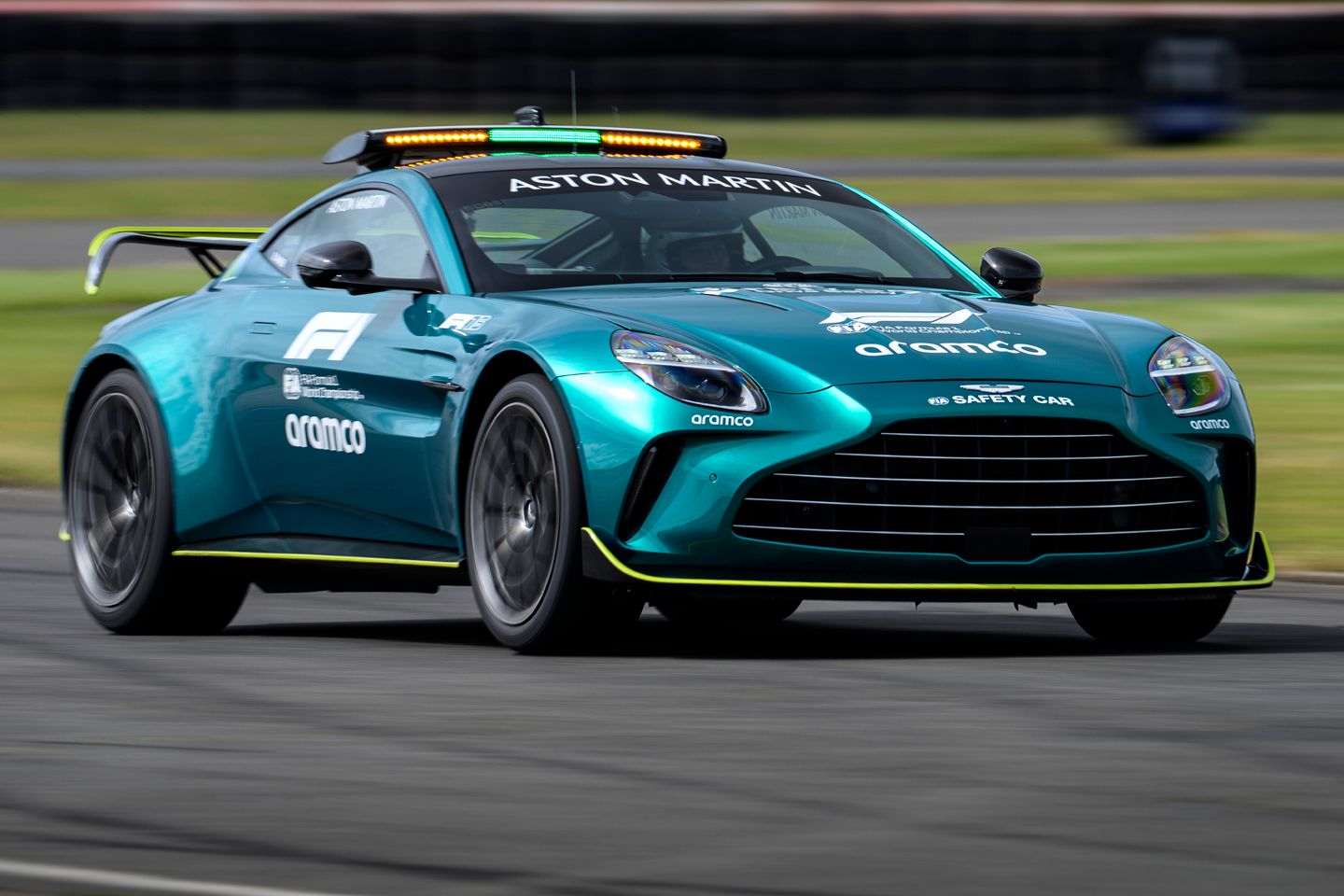
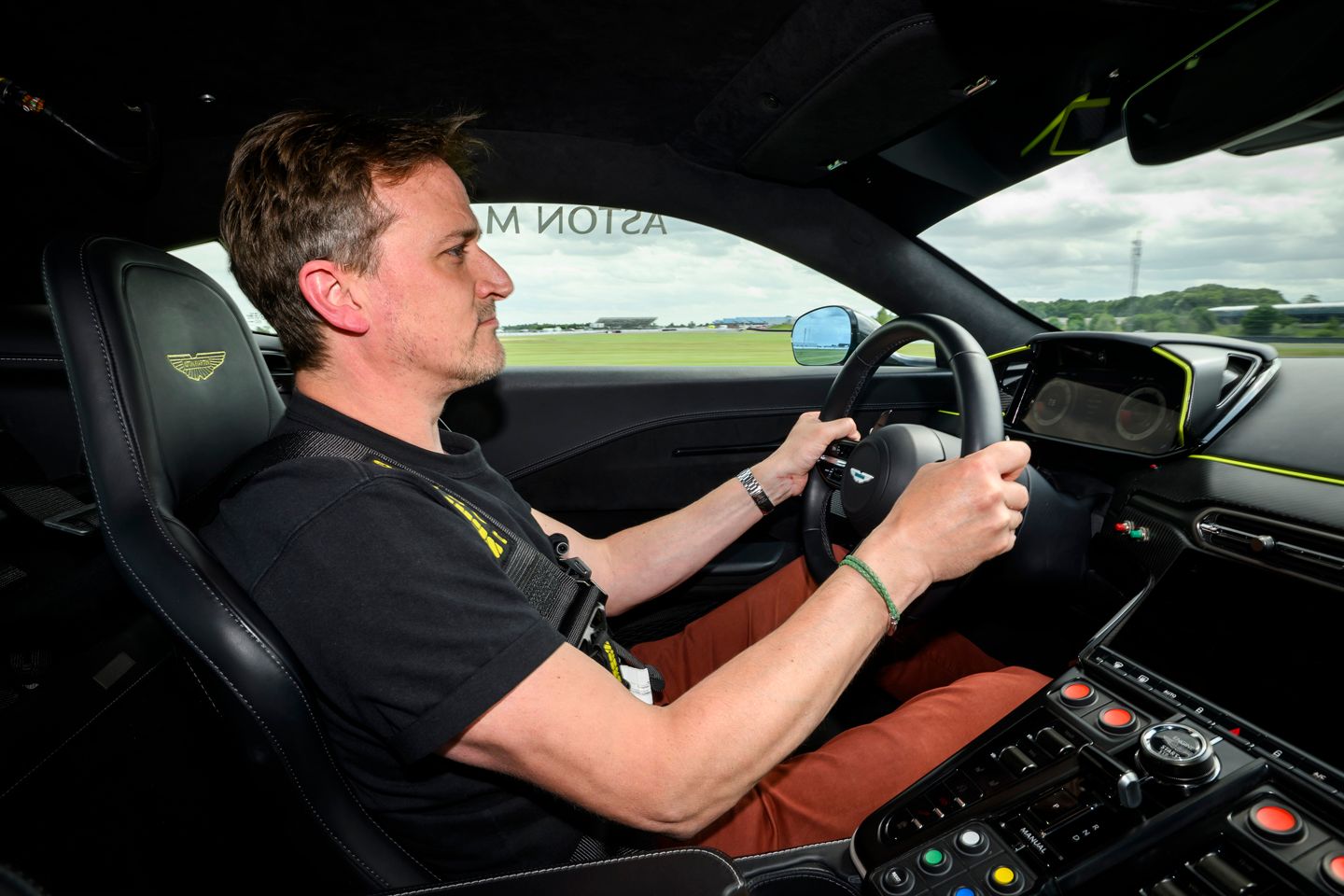
You might imagine the cars are heavily upgraded compared with their road-car counterparts. That would certainly make sense bearing in mind the punishment they take, but no. They get serviced almost constantly but, mechanically, they’re pretty stock. Both the Vantage and DBX run standard road-spec carbon ceramic brakes, the engines are unchanged, and even the tyres are regular Pirelli P Zeros: the drivers have the option of a more track-focused tyre but, because they may be called out in heavy rain, they rarely, if ever, choose them. The suspension geometry is more aggressive, the track rod ends are reinforced, the exhaust muffler is gone (helping to remove heat from below the boot floor) and the differential has a bespoke oil cooler, but that’s about it for durability and performance. The aero package delivers a bit more downforce thanks to a revised floor, plus the Vantage also has different brake ducts and an adjustable rear wing. The DBX has shed a bit of weight, too, thanks to lighter bucket seats all round, but with the part-cage used to mount the four-point harnesses, the lights and medical gear, Karl reckons it’s not much lighter when all’s said and done.
Both have roof lights to indicate their presence and intention on track, and two-way radios to communicate with race control, with a backup radio just in case. The medical car carries more than your average Halfords first-aid kit, naturally, so the FIA’s medical doctor can assess and deal with typical trackside injuries. Meanwhile, the safety car has two screens fitted on the passenger-side dash to show Bernd’s co-driver, Richard Darker, what’s happening on track. Bernd also has a rear-view camera to see what’s going on behind, but his main job is to concentrate on looking forward and not crashing. He did have a shunt at the 2024 Italian GP, but that wasn’t driver error. Approaching the famous high-speed Parabolica corner, the Vantage had a braking issue. Quick-thinking Bernd threw it into a spin to slow it down before it slammed, still relatively hard, into the barriers. Such incidents are rare, though.
What are these two cars like to drive on track, then? Well, around the Stowe circuit at Silverstone, jolly good fun. And I can say that because Aston was surprisingly relaxed about me going out and enjoying them. Bear in mind that there are only three of each model in the world, making these cars rarer than any Valkyrie, so binning one would cause a bit of a kerfuffle and, yet, I was given the keys and encouraged to push. So I did, up to a point. I’ve driven the DBX 707 on the road and loved it, but can a tall, relatively plump SUV really hold up on track? Well, better than you might think. The front end, for example, is delightfully positive on turn-in. That said, it definitely makes you aware of the physics in long radius corners: you can feel the tread blocks rolling over in defeat as mass overcomes grip, pushing the nose wide. The good news is you sense the understeer building through the wheel, so you know what’s coming, and when it does, it’s easily dealt with by easing off the throttle. And those standard brakes don’t ‘alf do a good job in slowing you down, although you have to build trust in the pedal because it sinks a long way down when you slam the pedal hard at the end of any straight.
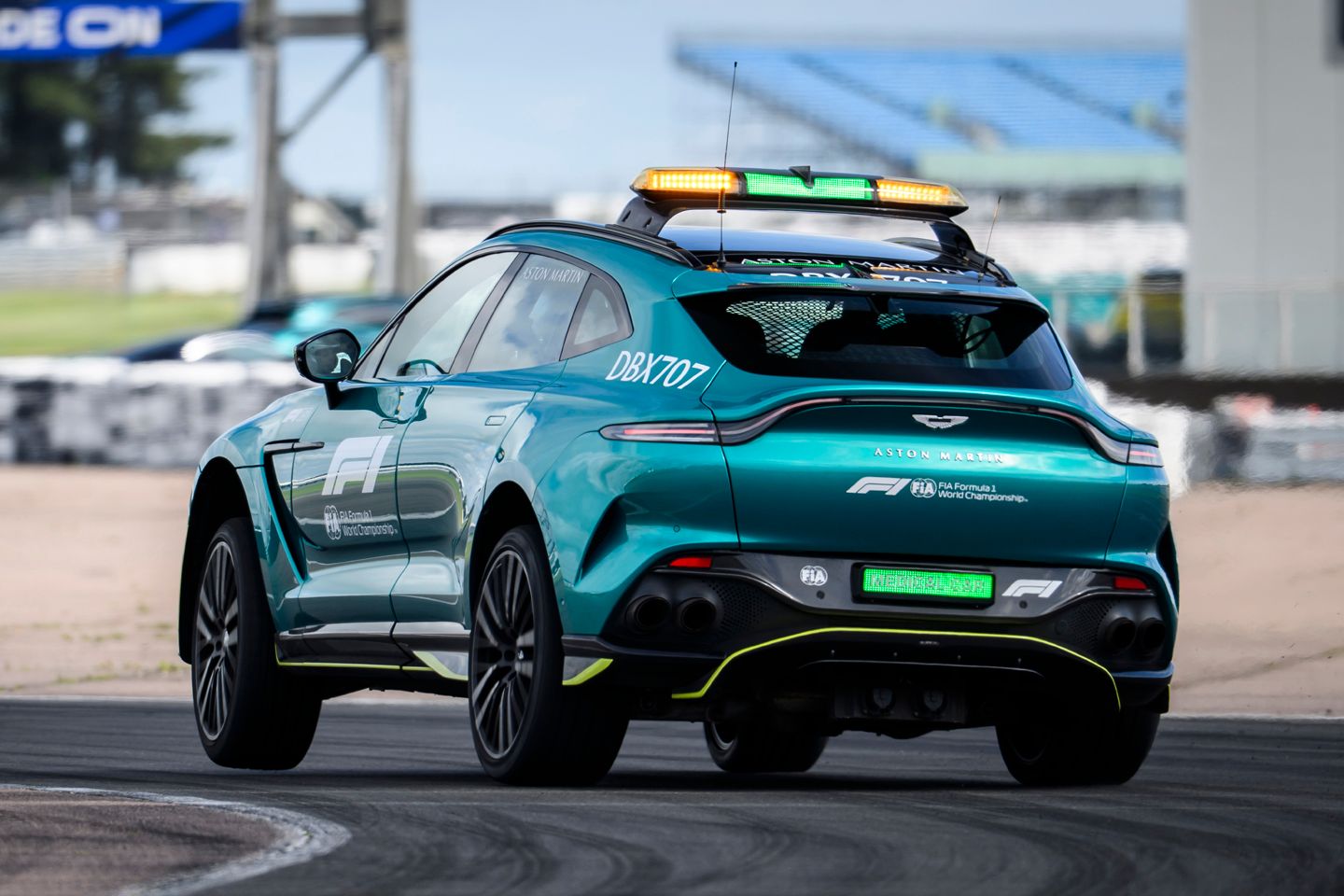
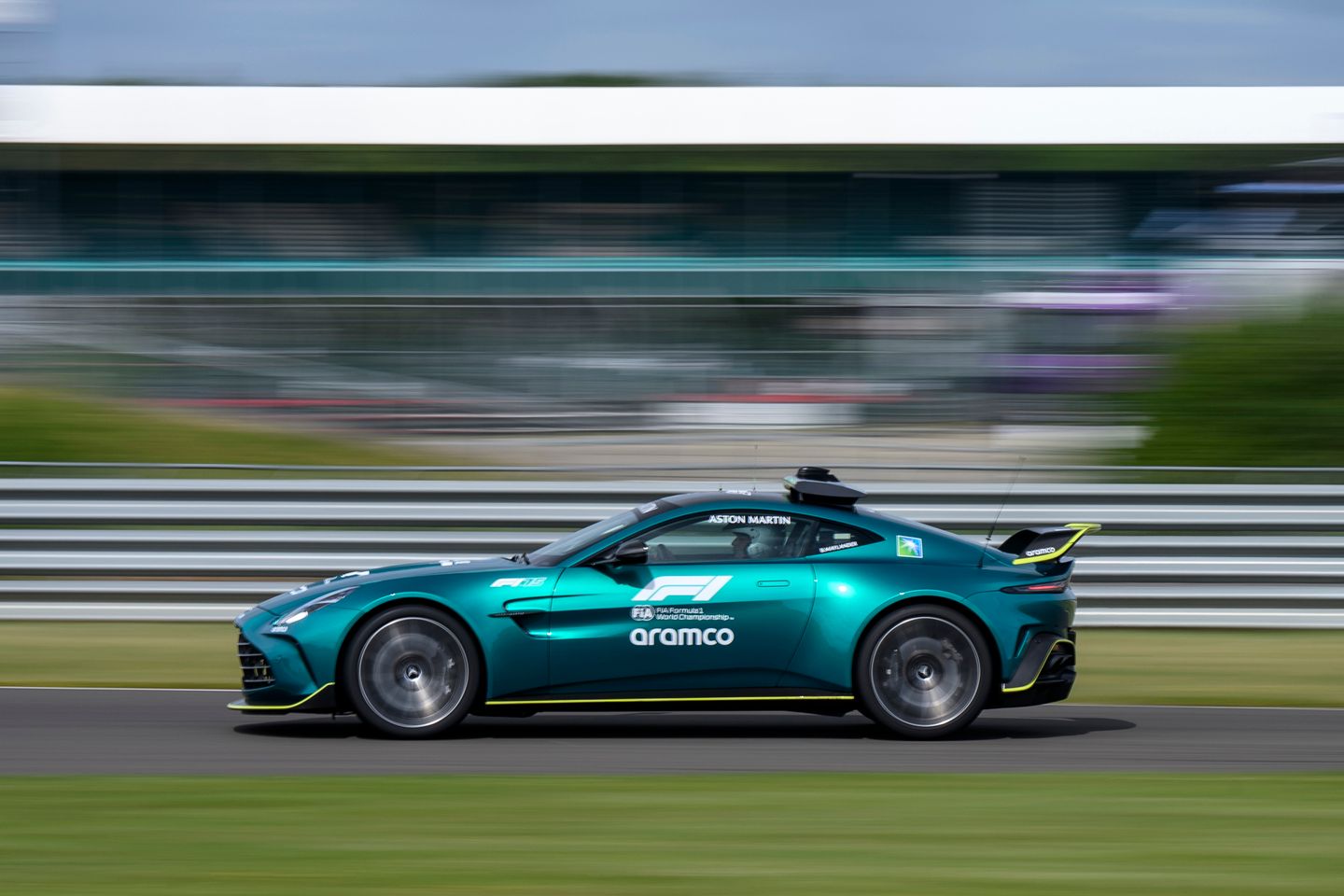
The gearbox is reasonably responsive on downshifts but, just like the road cars, leaves you hanging momentarily if you accidentally brush the limiter before giving you the upshift you asked for. This car still has the shift paddles on the column rather than behind the wheel, which is where you’ll find them on the facelifted DBX. That’s because this DBX isn’t the latest iteration. In fact, it wasn’t even a 707-spec car originally. This was an early DBX mule – originally used to develop the model before it went into production. It’s since had the 707 upgrade but has the old interior, which is showing some signs of a tough life. I ask who broke the centre air vent knob; Karl said, “Yeah, I think that was me.” Oops.
He also said he wishes the shift paddles were mounted to the wheel. He prefers them there and gave me an example of why: if he powerslides the DBX out of the Monaco hairpin (I mean, you would, wouldn’t you?), he has but a fleeting chance to grab an upshift as his fingers whiz past the paddle while he’s catching the slide. Nice. And boy, do the DBX and Karl like oversteer. On the road, I remember the rear end being engaging, but on track it’s bonafide lively. When Karl took me out for a few hot laps he was full-on-showboating, with prolonged drifts that show just how impressive the DBX’s rear-biased four-wheel drive is. He also said he likes the way the rear rotates into corners. That’s what impressed me most about how he drives the car. Whereas I was slightly uneasy about losing the rear on turn-in, he really carries the speed while braking and turning, and trusts that it won’t bite.
The Vantage is a completely different kettle of fish. In terms of size and weight, it’s a minnow while the DBX is a halibut. Indeed, this is the perfect demonstration of the difference between a fast SUV and a proper sports car: the Vantage feels immediately much lighter and so much quicker to change direction. It’s chalk and cheese, in fact, and it’s fast, too. If you think it looks slow on track that’s because F1 cars will make any road car’s pace look irrelevant, but from behind the wheel, it goes just fine. And there’s one aspect where you might argue it beats the F1’s current 1.6-litre hybrid formula: noise. Like the DBX, the Vantage drowns out everything with its intoxicating V8 thunder as you wind up down the straights, and, minus the muffler, it’s even more invigorating.
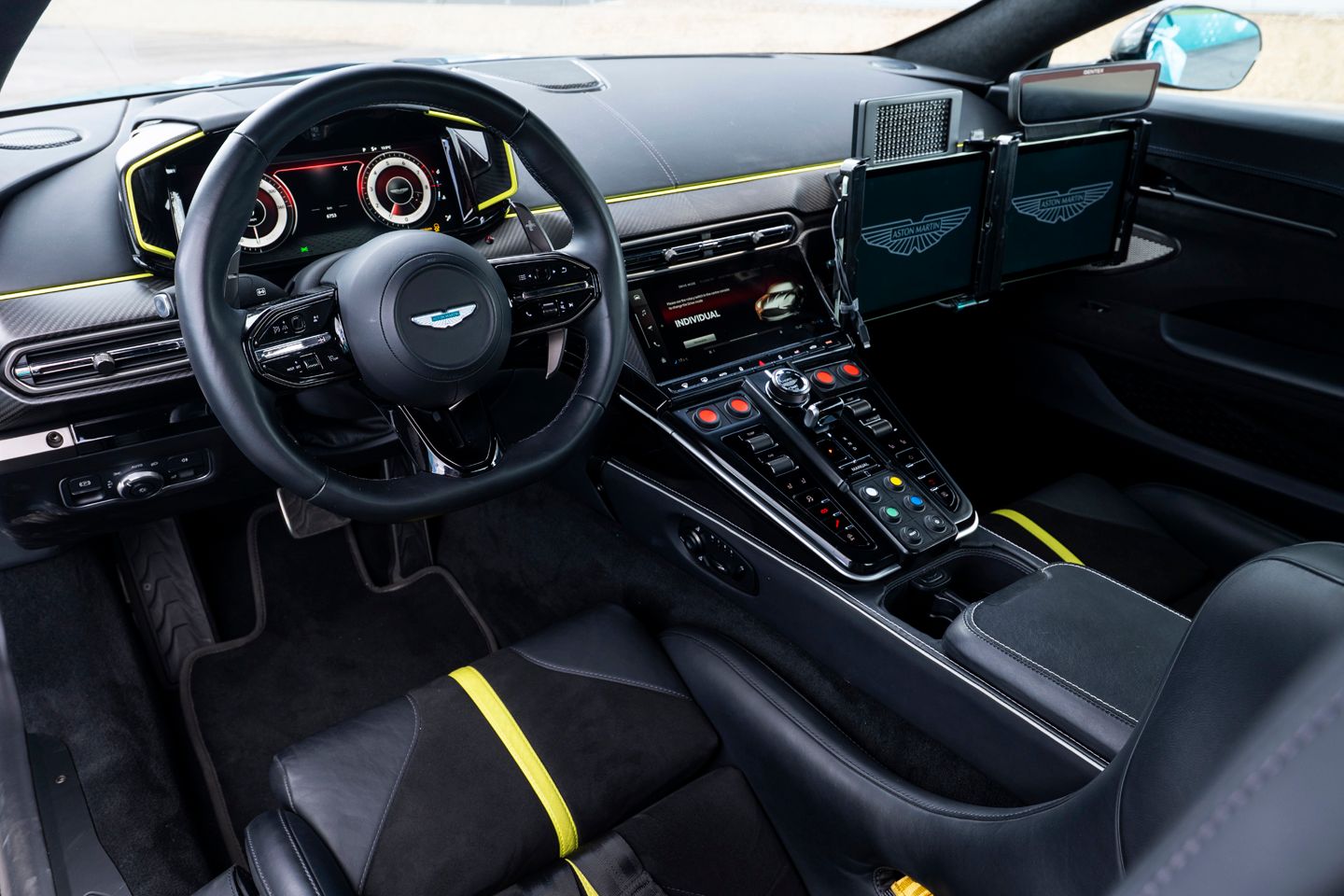
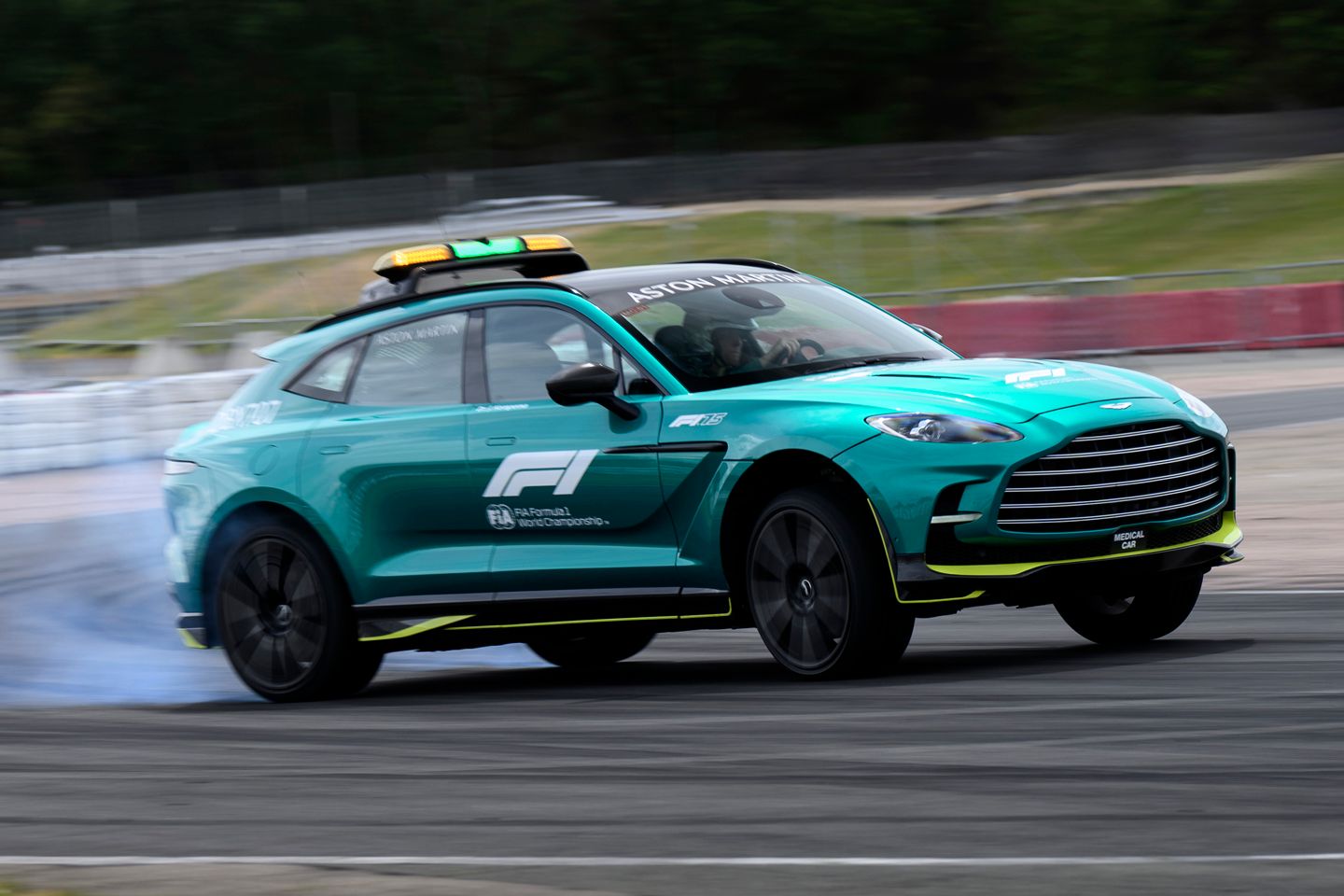
Down the bumpy back straight, there’s a surprising amount of movement in the suspension – to the point it feels like it’s hitting the bump stops – but it doesn’t upset the car's line. It certainly never feels like it’s going to lose composure and send you into the scenery. Again, like the DBX, the front end is eager, only more so with less inertia, and gives you all the feedback you need. The rear is mobile but not loose, and that’s something that came as a shock. The Vantage is only driving through the rear wheels, remember, but it doesn’t struggle for traction. You have to manage it, of course, because there’s a lot of torque flowing to the rear tyres, but it’s really drivable. That’s a huge improvement from the last time I drove a Vantage.
That was when this model first appeared, and the diff was so tightly wound it was like having two steering wheels – touch the throttle and it would dive towards the apex alarmingly, or widen its arch in the same exaggerated way when you backed off. This latest Vantage, as is typical of Aston’s second-generation models, feels like it’s been properly sorted. Well, except the gearbox, which needs a little more work. While the DBX’s ‘box isn’t perfect, I found the ‘box in the Vantage an actual hindrance. Even Bernd agreed it’s not great downshifting from third to second, and I’d say he’s being polite. It’s downright recalcitrant in its refusal to give second when asked. He did suggest that “It might not be running the latest software,” though.
Then it was time for Bernd to show me what he can do in a car he knows so well. Now, my hot laps with Karl seemed more about having fun and showing me how easy the DBX is to drive sideways, which was entertaining. But sitting next to Bernd was a different kind of entertainment: he was - how to put it best - a little more focused. He said he wasn’t really pushing, but it felt pretty committed to me. He really knows how to hustle the Vantage around the tight and twisting Stowe circuit. I reckon co-driver Richard would need some pretty absorbent underpants going through a damp Eau Rouge or 130R. Especially as Bernd usually runs the car with little or no traction control on new tyres, but he does ratchet up the variable TC to midway as the tyres wear and heat up. He says you generally get one quick lap out of the tyres, depending on the circuit length and grip; the next lap will always end up “something like 1.5sec slower,” even if he improves his driving with an extra lap’s experience.
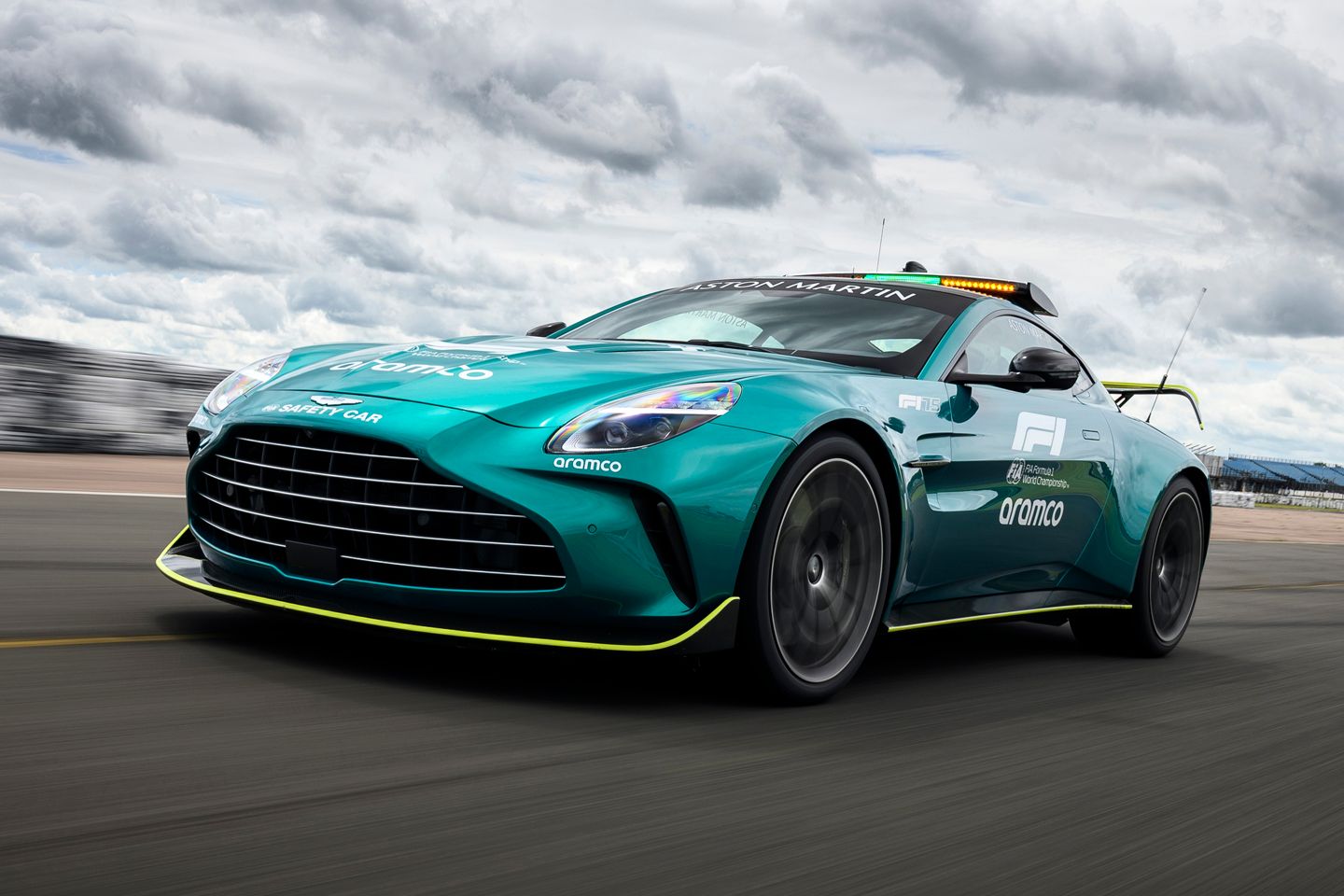
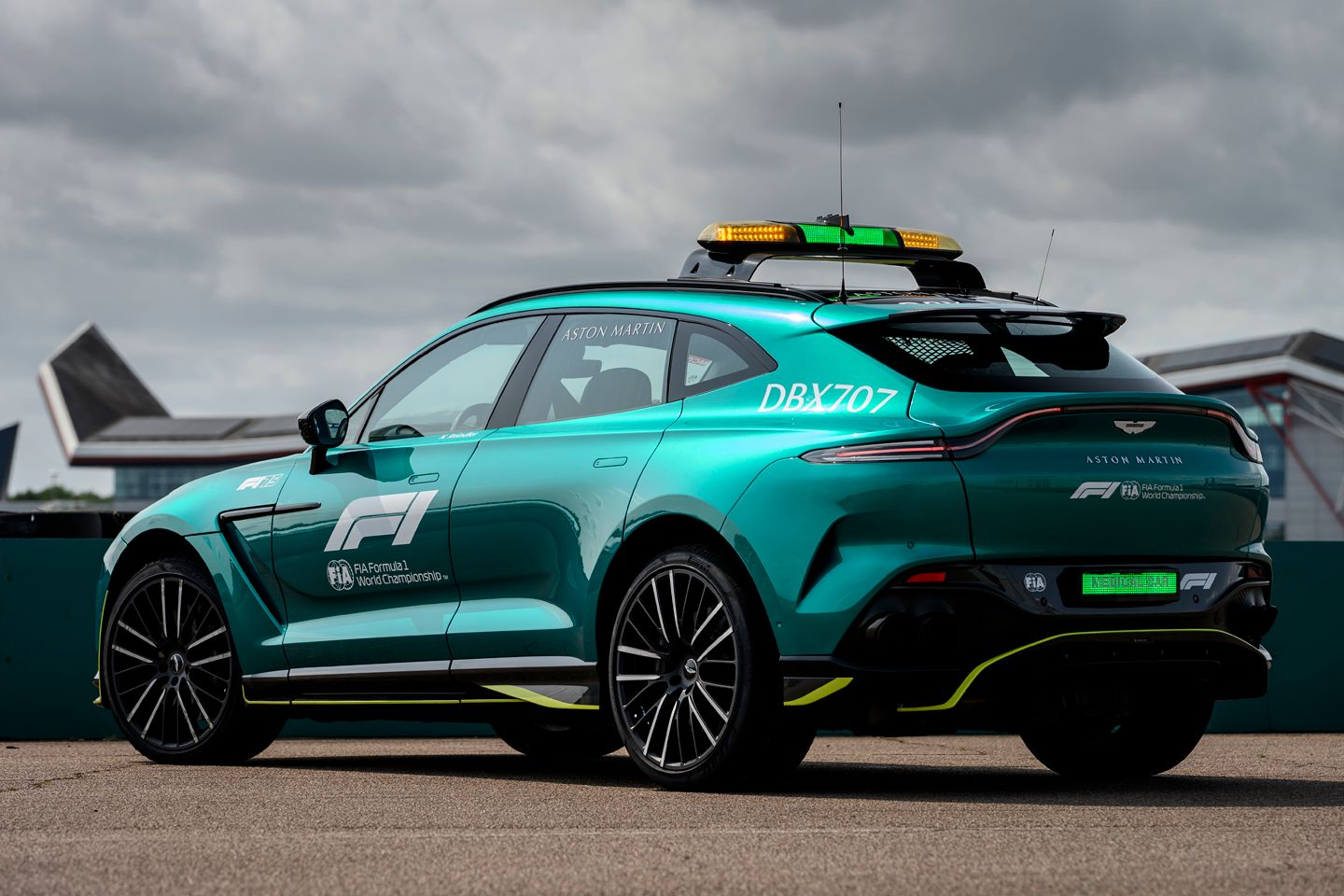
So, the obvious question: “Which car do you prefer: the Aston or the Mercedes?” Bernd, bearing in mind his long history with Mercedes, was diplomatic. He said they’re both good, although he did say that when driving the Aston Martin, “I feel a little bit like James Bond.” Karl was more open. He was at pains to point out that the cars he uses from each brand are completely different – the Mercedes GT being a four-door car while the DBX is an SUV – and he told me the GT “does everything you need it to.” However, he says, “the DBX is more fun, and I really enjoy driving it.” I’d say that was the truth after watching him smiling away behind the wheel.
My main takeaway, however, was how close to road cars these two models are. I just didn’t expect that. Remember, these cars aren’t just running in the F1 races, they cover all the support races, too: F2, F3, F1 Academy and Porsche SuperCup. That’s a lot of running. Last year, the Vantages covered 127 laps and this year they’re already up to 114, and we’re not even halfway through the season. As a result, I assumed they’d have been completely re-engineered to deal reliably with that amount of track time, but no. I said to Bernd, “Are you really flat out at all times when out on track?” He said, “There are times I have to drive slowly, to let the F1 cars catch up if there’s a big field spread or because there are marshals on track.” But apart from that, yes, he’s generally flat out. So next time you see the safety car appear, thinking it looks a bit pedestrian, now you know the truth: Bernd is most likely giving it everything. Oh, and if you’re at Monaco next year, make sure you watch at the hairpin. That way, if the racing is typically dull, at least you’ll see a power-sliding DBX and, no doubt, a huge smile on its driver’s face...
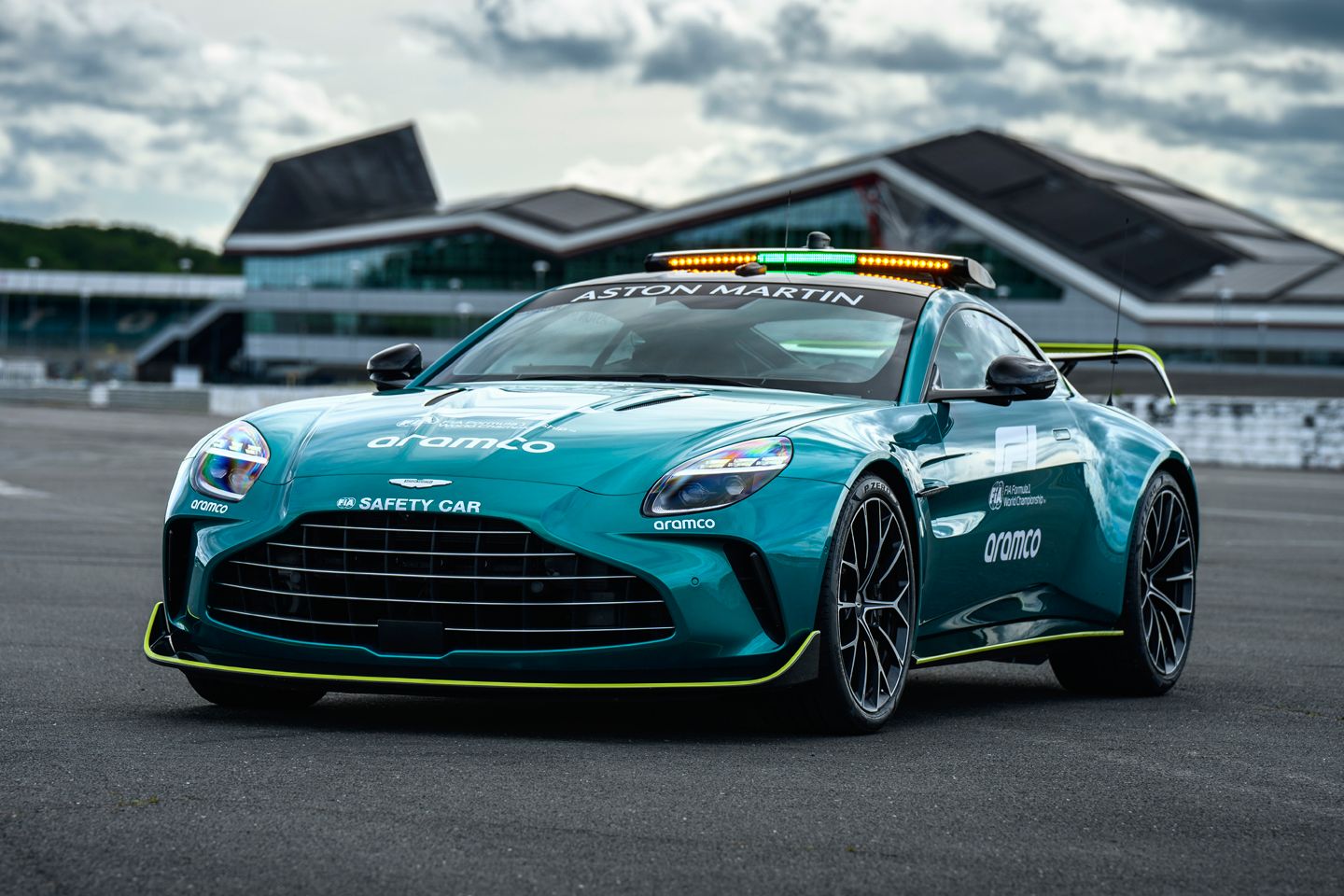
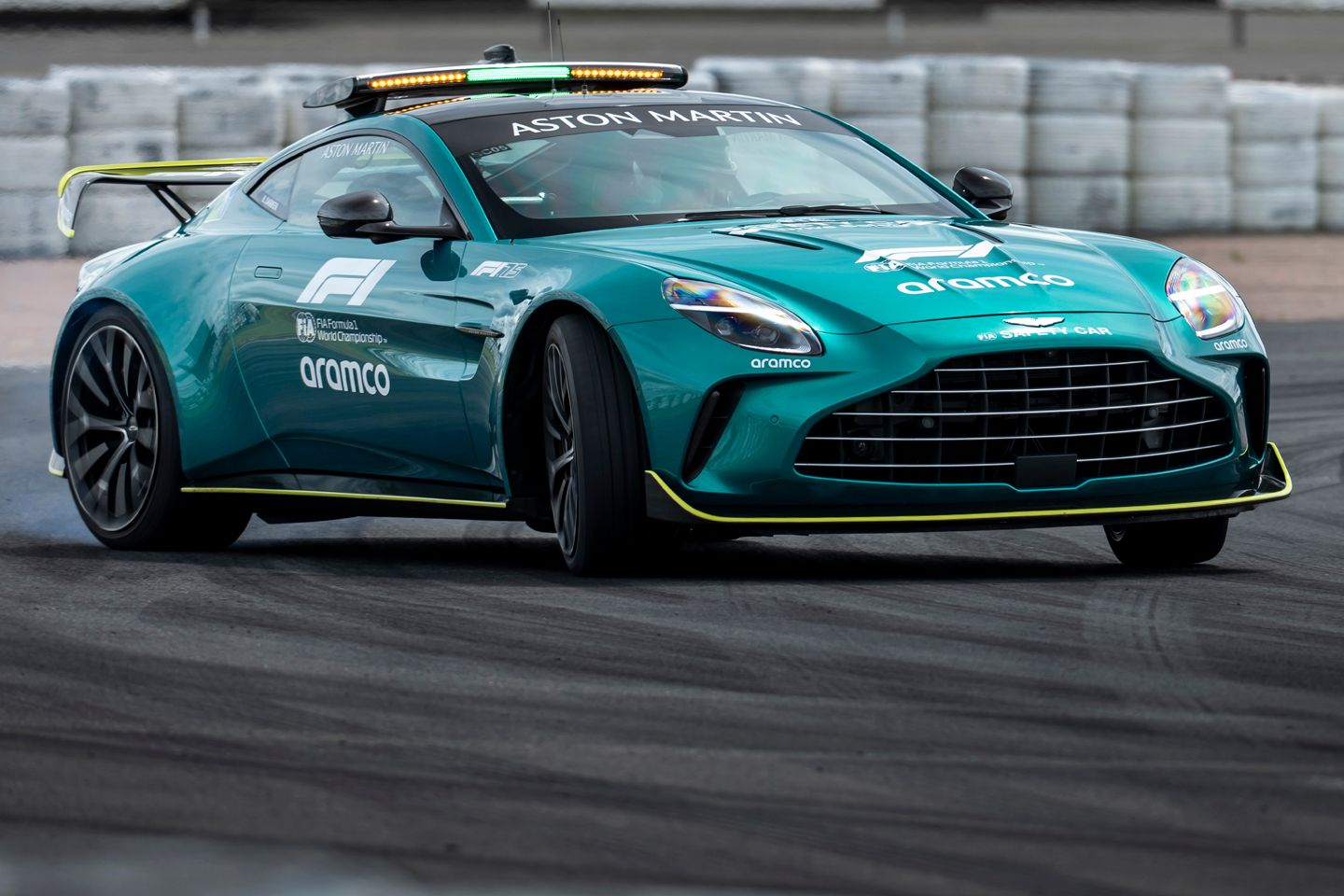
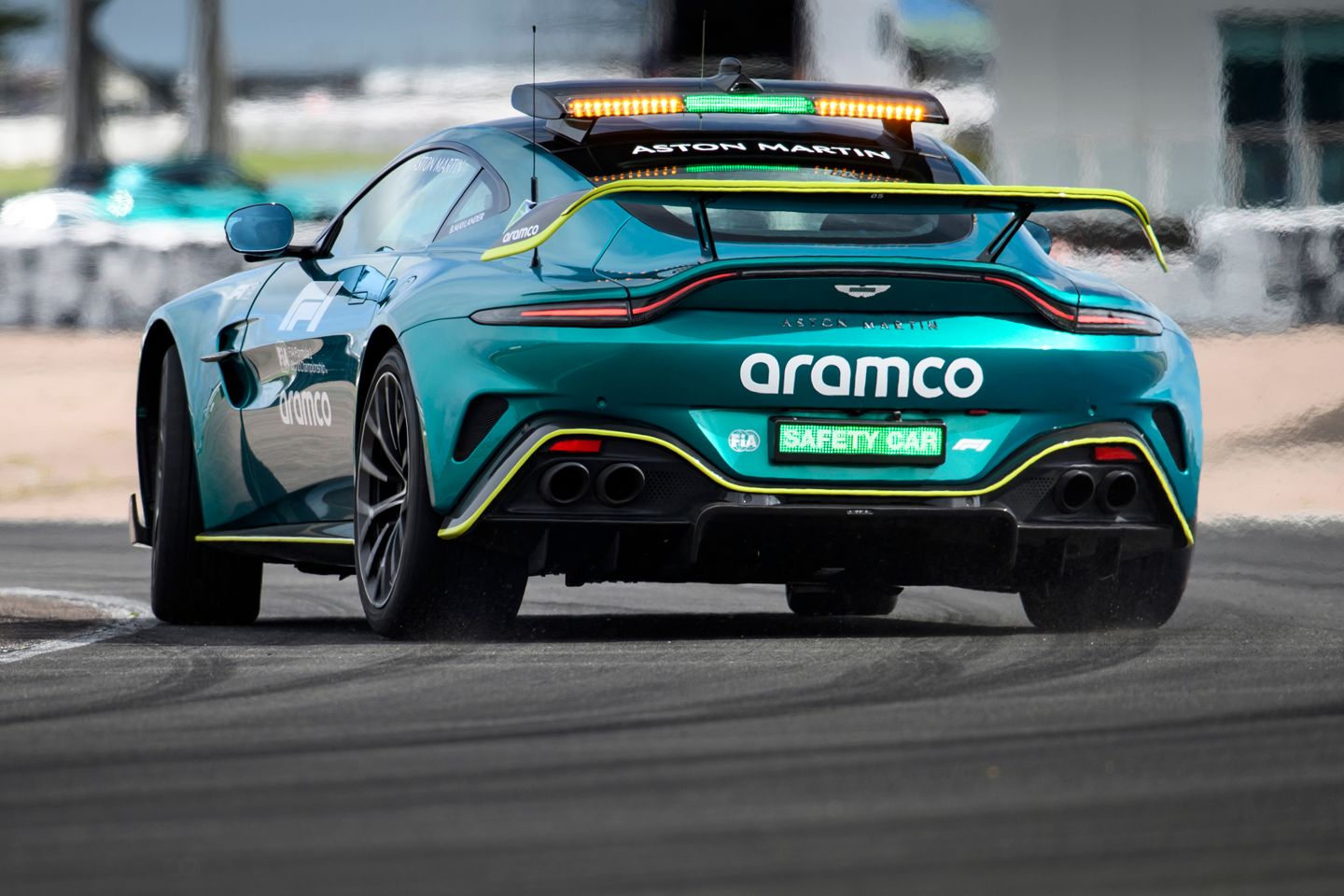
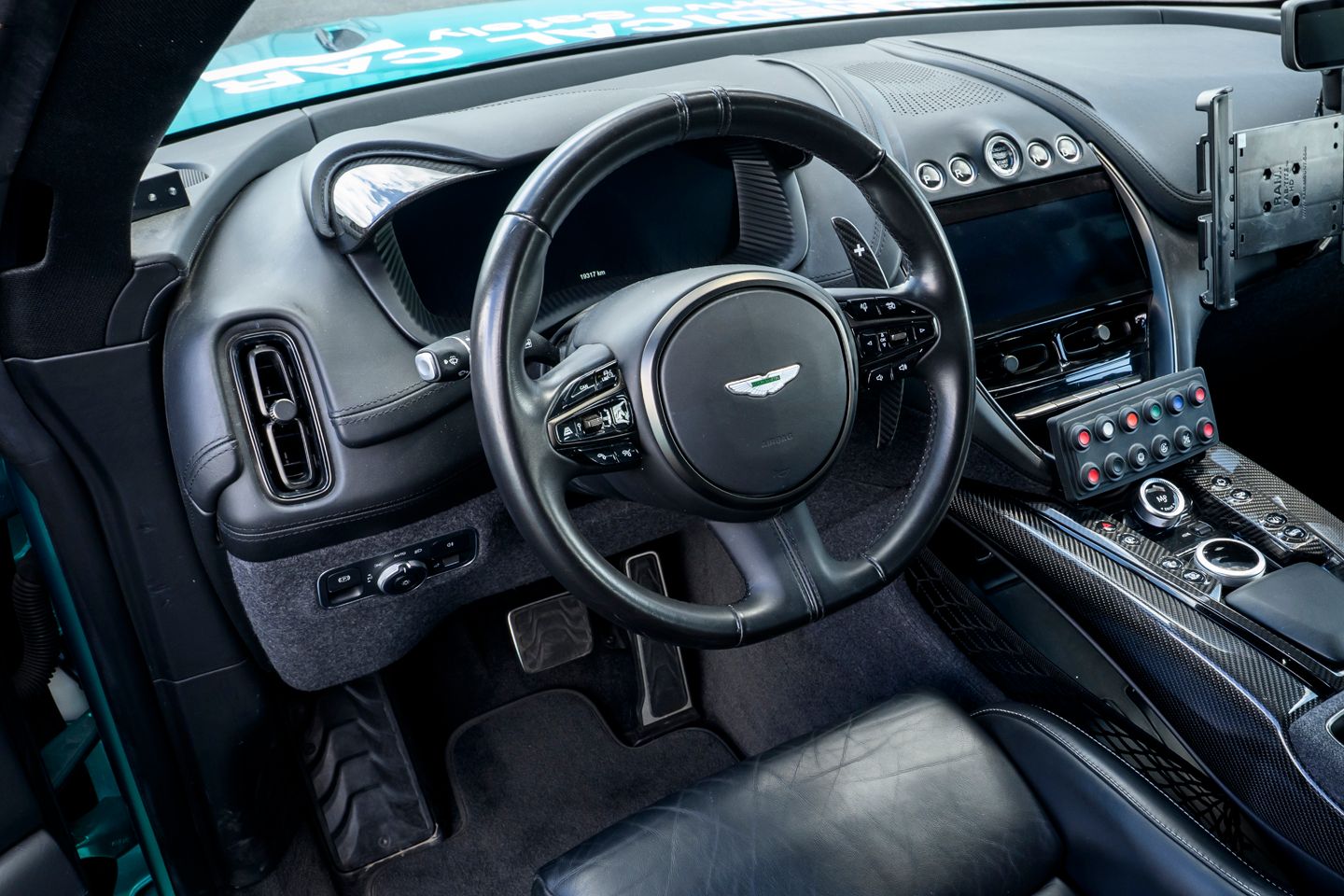
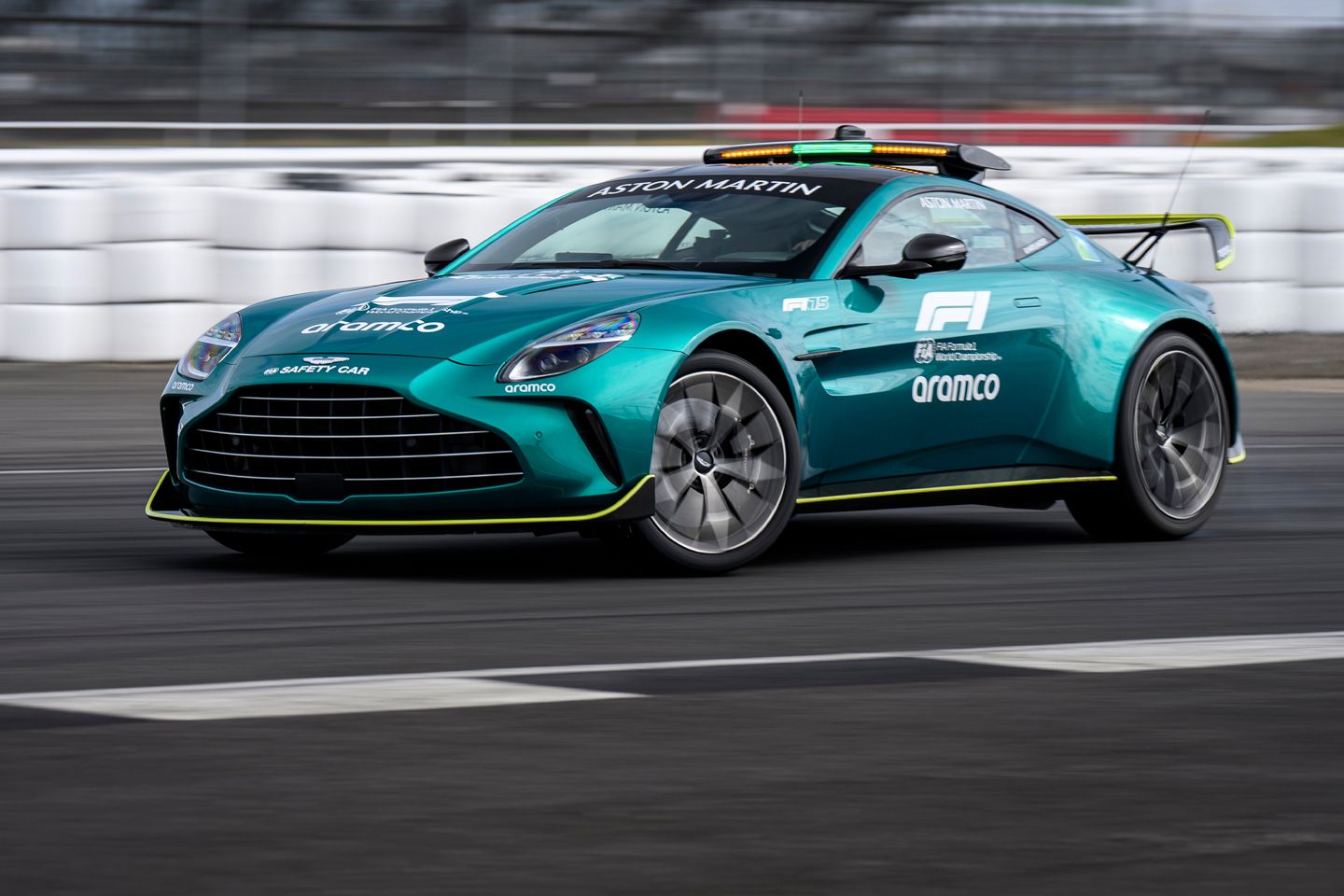
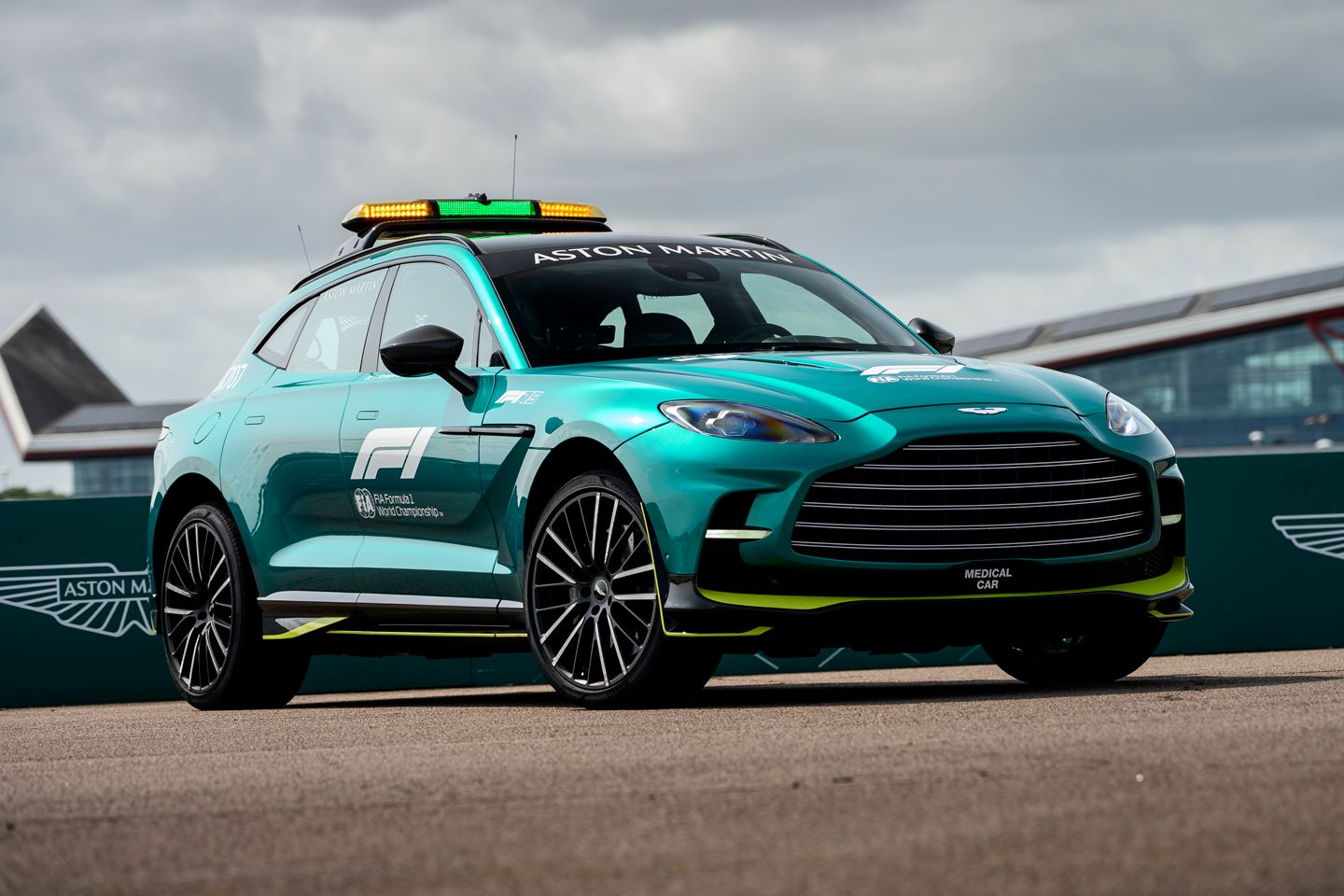
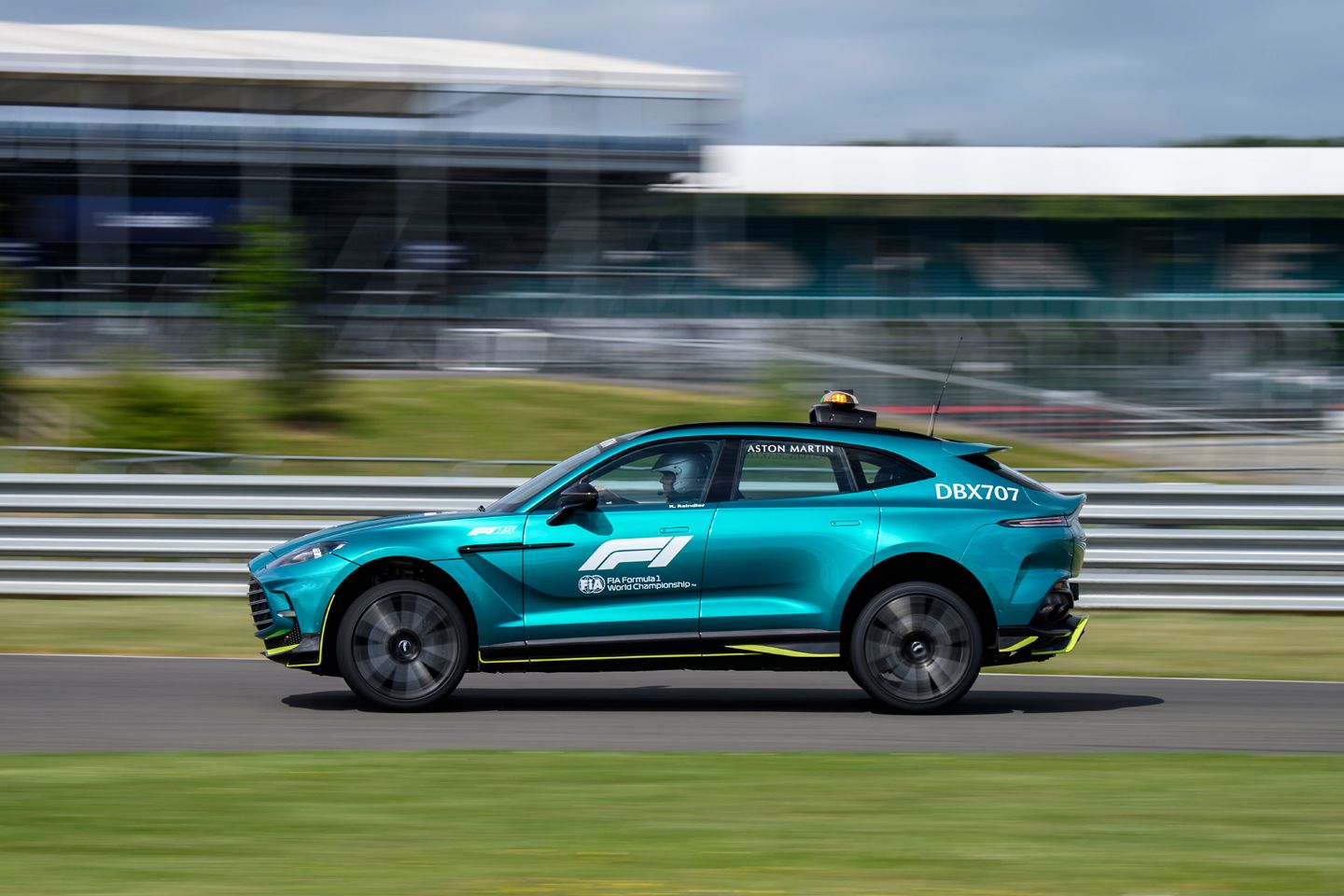
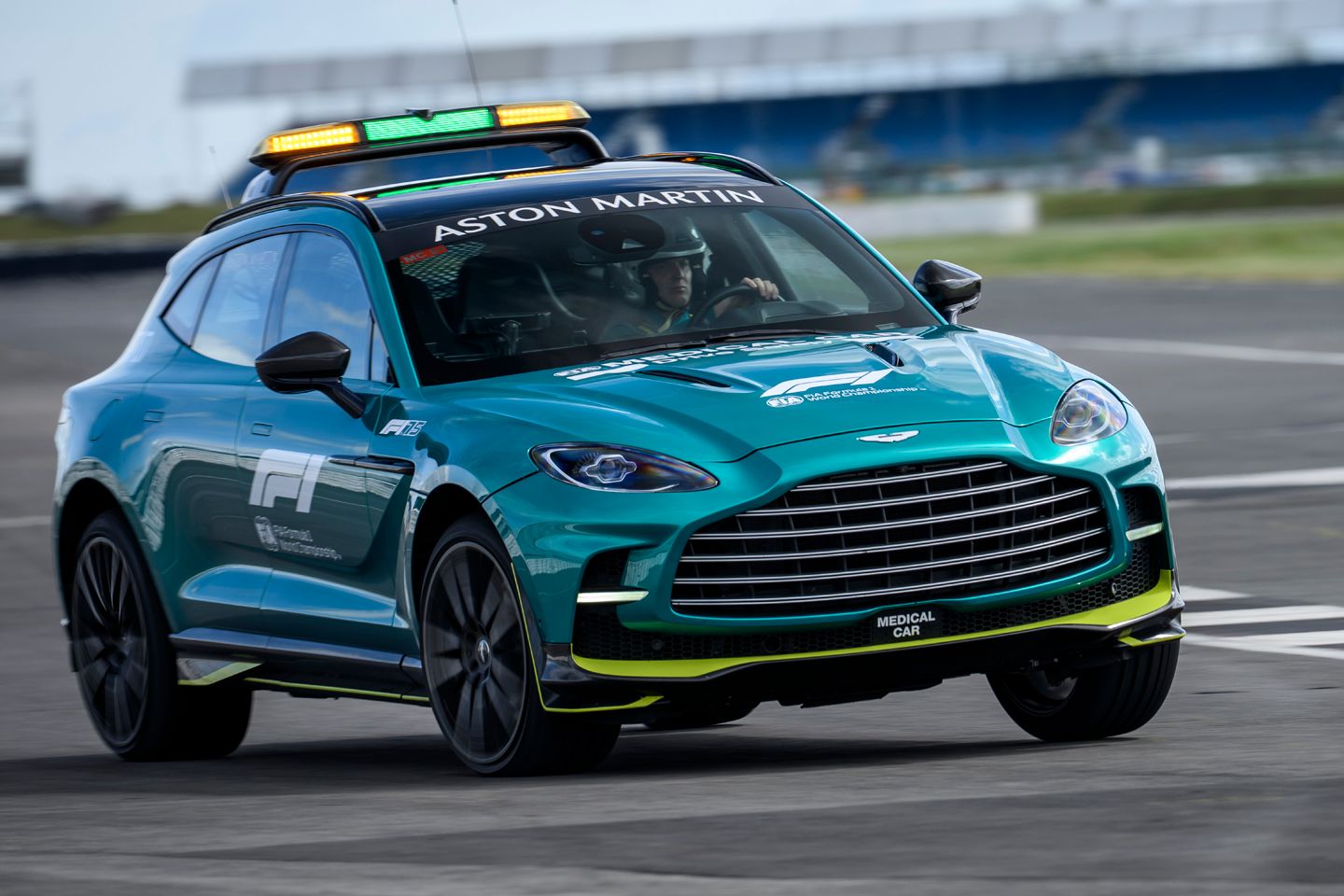
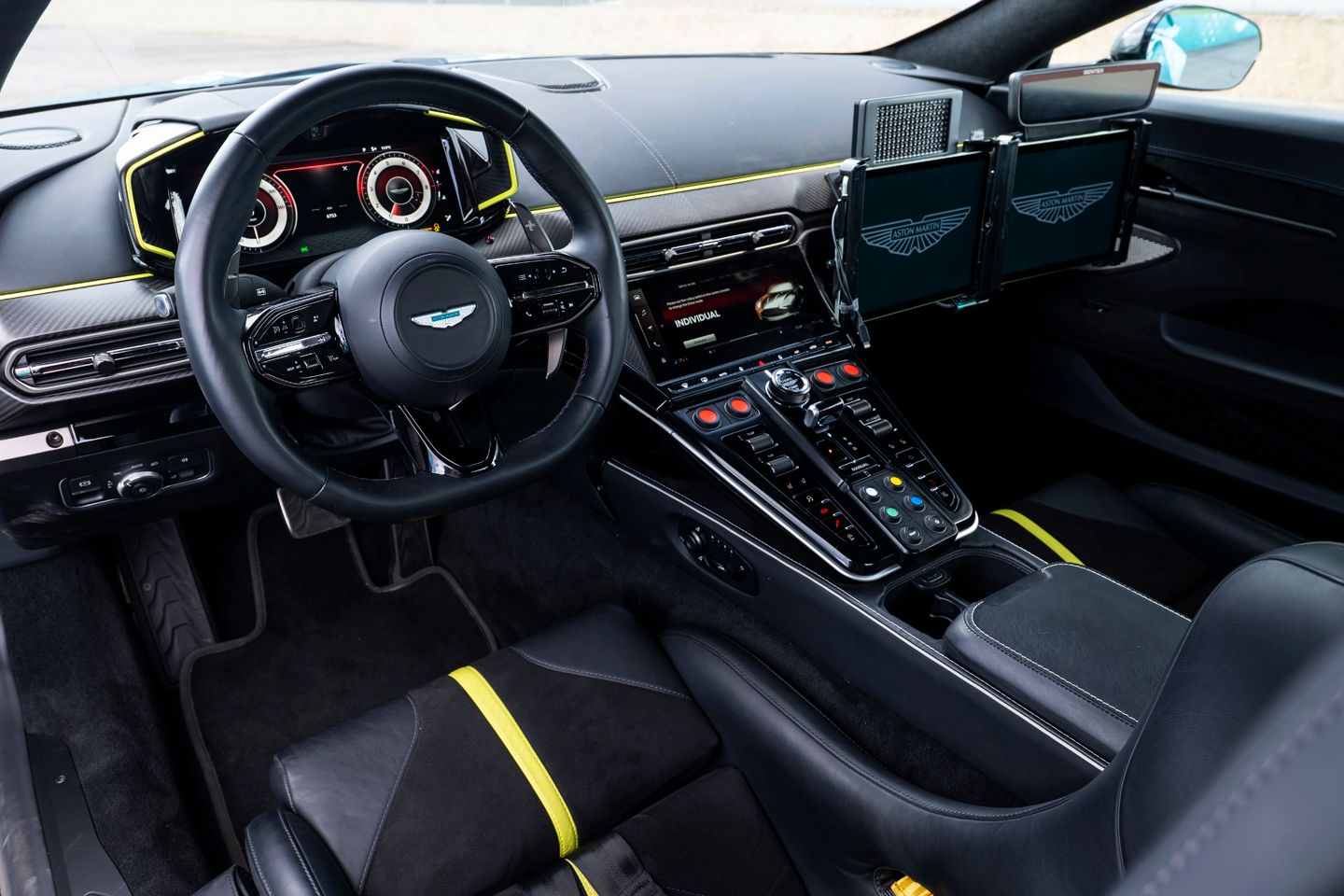
the DBX707 there showing off all of its and all SUV's "hidden" performance flaws. Fortunately, only ever used to get off the lights quite quickly to stop at the next coffee shop.
Shame they do not sound like V10's tho
Returning today to read the other comments, I'm surprised to see so few comments on an interesting write-up that contains first hand reports from highly-experienced and well-respected experts in their fields. Perhaps if this was yet another regurgitation about a 911 sub-model or a polarising EV thread it would have received more replies!
Gassing Station | General Gassing | Top of Page | What's New | My Stuff




